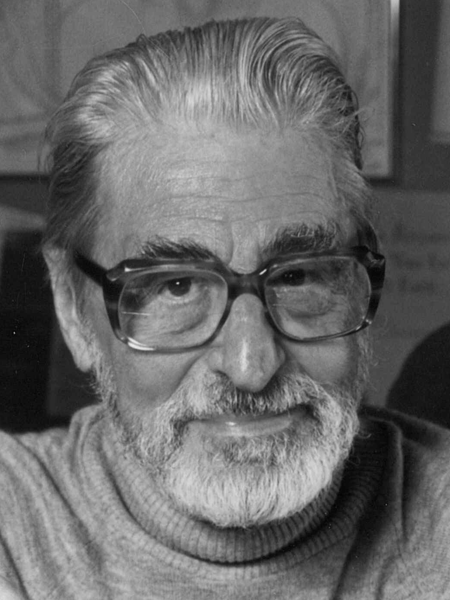
Birthday: March 2, 1904
Location: Springfield, Massachusetts, U.S.
Nationality: American
Alma mater: Dartmouth College
Occupation: Writer
Years active: 1943–1989
On March 2, 1904 Theodor Seuss “Ted” Geisel was born in Springfield, Massachusetts and grew up there. After high school, he left for Dartmouth College. There, he joined the school’s humor magazine Dartmouth Jack-O-Lantern as an illustrator/cartoonist, ultimately becoming its editor-in-chief. At one point, Ted and some friends were caught drinking gin his college room during Prohibition. Dartmouth’s Dean, forced Geisel resign from all extracurricular activities, including work on the Jack-O-Lantern. Undeterred, Theodor continued to secretly submit work to the magazine until his graduation under the pen name “Seuss” adding the “Dr.” title because his father always wanted him to become a physician.
In 1925, he entered Lincoln College at Oxford University in England to pursue a Doctorate of Philosophy in English literature. Ted met Helen Palmer (whom he would eventually marry) at Oxford. Once she saw the doodles of animals in his sketchbooks, she encouraged him to earn a living drawing. Geisel abandoned his Oxford studies and returned to Springfield in February of 1927.
The following July, one of Ted’s cartoons was published in The Saturday Evening Post, giving him his first nationwide exposure. Geisel moved to New York and accepted a writer/illustrator job for the humor magazine Judge later the same year.
Theodor’s growing fame allowed him to start picking up advertising contracts in 1928. Beginning with the popular insecticide Flit, his clients included Standard Oil’s Essomarine boat fuel and Essolube Motor Oil, as well as ads for Ford Motor Company, NBC Radio, and Holly Sugar.
In 1931, Geisel wrote and illustrated his first humor books and by 1936, wrote his first children’s book, And to Think That I Saw It on Mulberry Street. More books followed: The 500 Hats of Bartholomew Cubbins in 1938, The King’s Stilts and The Seven Lady Godivas in 1939 and Horton Hatches the Egg in 1940 before the U.S. entered World War II.
A New York City daily newspaper, PM hired Ted as an editorial cartoonist to draw political cartoons from 1941 to 1943. Afterwards, Geisel lent direct support of the U.S. war effort creating posters for the Treasury Department and the War Production Board in 1942.
1942 also saw the first adaptation of a Dr. Seuss story. Horton Hatches the Egg was made as an animated short film directed by Bob Clampett at Leon Schlesinger Productions.
The following year, he was commissioned as a captain in the U.S. Army and served as commander of the Animation Department of the First Motion Picture Unit of the United States Army Air Forces working with some of America’s best filmmakers, illustrators, animators, voice actors, and journalists.
There, he wrote the Private Snafu series of animated short cartoons from 1943 to 1945. These were adult-oriented army training films intended to entertain and boost the morale of American GI’s serving overseas while simultaneously educating them about the importance of discipline and following military orders to remain battle-ready. At Hollywood’s “Fort Fox,” Ted worked alongside Warner Bros. animation directors Chuck Jones and Fritz Freleng to produce 27 Snafu cartoons for the U.S. War Department.
During this same period, two of his books were adapted into stop-motion films by George Pal for Paramount Pictures’ Puppetoons theatrical cartoon series. The 500 Hats of Bartholomew Cubbins, was released in 1943 followed by And to Think I Saw It on Mulberry Street in 1944. Each film earned an Academy Award for “Short Subject (Cartoon)” nomination.
After war’s end, Geisel and his wife relocated to the community of La Jolla in San Diego, California, where he resumed writing children’s books as Dr. Seuss, penning such favorites as McElligot’s Pool in 1947 and Bartholomew and the Oobleck in 1949.
Theodore remained busy throughout the ‘50s. His original story Gerald McBoing-Boing was adapted into a cartoon by UPA, eventually winning an Academy Award for Best Animated Short Film in 1950. He wrote more children’s books including If I Ran the Zoo in 1950, Horton Hears a Who! In 1955, If I Ran the Circus in 1956, and both The Cat in the Hat and How the Grinch Stole Christmas! in 1957. Geisel’s Gerald McBoing-Boing was adapted for animation again, this time as a television series that ran for three months between 1956 and 1957.
Dr. Seuss’ Green Eggs and Ham was written in 1960, and in 1966 Ted authorized his former “Fort Fox” war colleague Chuck Jones to produce How the Grinch Stole Christmas! as an animated television special.
His working relationship with Jones continued for a similar adaptation of Horton Hears a Who! in 1970 and an adaptation of The Cat in the Hat for another television special in 1971. The following year, Geisel began working with DePatie-Freleng, writing six more animated TV specials from 1972 to 1982: The Lorax, Dr. Seuss on the Loose, The Hoober-Bloob Highway, Halloween Is Grinch Night, Pontoffel Pock Where Are You?, and The Grinch Grinches the Cat in the Hat. Ralph Bakshi directed an animated television special adaptation of Theodore’s The Butter Battle Book in 1989 for TNT.
At the age of 87, Ted Geisel passed away at home on September 24, 1991, but his legacy with animation continued on with Cookie Jar Entertainment and Classic Media’s 2005 to 2007 remake of the 1956 Gerald McBoing-Boing series. Additionally, Warner Bros. Animation produced Green Eggs and Ham, an animated streaming television series adaptation of the 1960 Dr. Seuss book by the same name for Netflix in 2019. A second season, titled Green Eggs and Ham: The Second Serving aired in 2022.